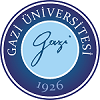
Görüş, istek ve değerlendirmelerinizi bize iletin.
Amerikan Basınında Doğu İsyanları 1925-1938
Esra Sarıkoyuncu Değerli
Özet
Türkiye Cumhuriyeti’nin kurulmasından sonra Milli Mücadele döneminde olduğu gibi Kürtçü faaliyetlerin tehdidi ile karşı karşıya kalındığı görülmektedir. Bilindiği gibi, bu tehditlerin ilki ve en büyüğü Şeyh Sait İsyanı (13 Şubat–15 Nisan 1925) olmuştur. Musul’u İngiliz mandaterliği altındaki Irak’a bağlamak maksadıyla kışkırtılan ve kısa sürede Bingöl, Muş, Diyarbakır, Tunceli, Elazığ, Ergani, Silvan, Siirt ve Urfa gibi geniş bir alana yayılan isyan hareketi her ne kadar 15 Nisan’da bastırılmışsa da bölgede huzursuzluk dört yıl daha devam etmiştir. Mayıs 1926’da Yusuf Taşo ve çetesinin İran sınırını geçip Beyazıd köylerinden hayvan çalarak Ağrı yaylalarına sığınması Cumhuriyet tarihimizde “Ağrı isyanları” denilen ve 1930’a kadar devam eden bir seri olayların başlamasına sebep olmuştur. 21 Mart 1937 tarihinde de Tunceli-Erzincan yolundaki bir köprünün Haydaran ve Demanan aşiretleri tarafından yakılmasıyla başlayan Dersim isyanı, 1938’e kadar devam etmiştir. Doğu isyanları bütün dünyada büyük ilgi ve merak uyandırmıştır. İsyanların ilgiyle takip edildiği ülkelerden biri de Amerika Birleşik Devletleri’dir. Çalışmamızda Amerikan basınında Doğu isyanlarının nasıl algılandığı ortaya konmaya çalışılacaktır.
Anahtar Kelimeler: Şeyh Sait İsyanı, Ağrı İsyanları, Dersim İsyanı, Amerikan Basını, Türkiye.
The Eastern Rebellions on American Press 1925-1938
Esra Sarıkoyuncu Değerli
Abstract
It could be observed that Turkish Republic in its early stage of foundation was faced with the threat of Kurdish activities. As is known, the first and the biggest Kurdish rebellion was the Sheik Sait Rebellion (13 February- 15 April 1925). Even though the rebellion that was incited for the aim of annexation of Musul to the then English mandate, Iraq, and that expanded over a vast geography in a rather short time was suppressed, the unease in the territory kept going on for the next four years. The hiding of Yusuf Çato and his band in the Ağrı uplands in May 1926 after crossing the Iran border and stealing the animals of the villages in Beyazıd led to the outbreak of a series of events known as “Ağrı rebellions” that continued until the 1930s. The Dersim Rebellion that started with the demolition of a bridge on Tunceli-Erzincan road by Haydaran and Demanan tribes on 21 March 1937 went on until 1938. The rebellions in the east of Turkey aroused great interest throughout the world. One of the countries that paid attention to the rebellions and followed up the matter closely was the United States of America. In this study, how the Eastern Rebellions were perceived and interpreted by the press of the US will be strived to examine.
Key Words: Şeyh Sait Rebellion, Ağrı Rebellions, Dersim Rebellion, American Press, Turkey.

Görüş, istek ve değerlendirmelerinizi bize iletin.